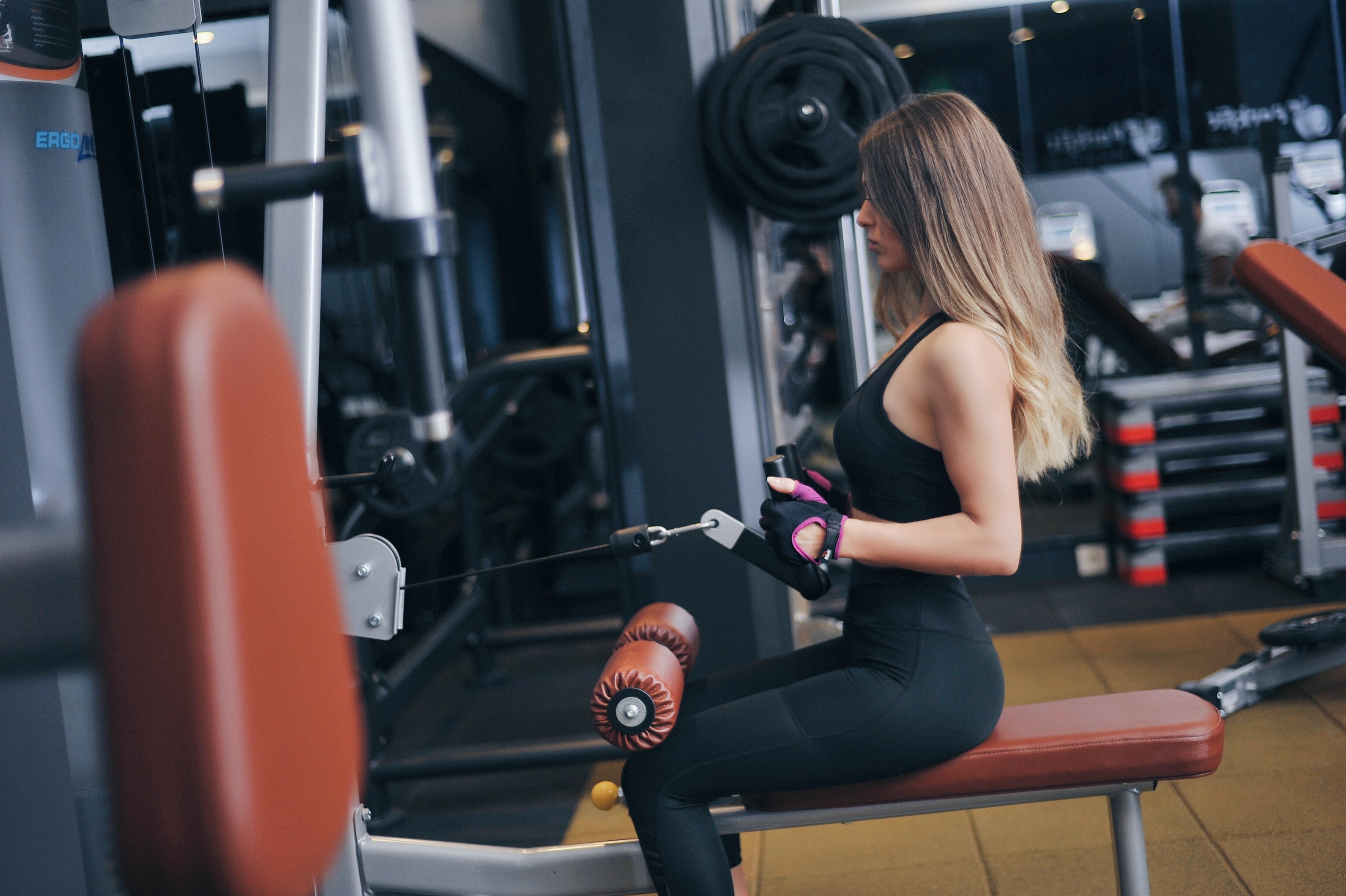Achieving and maintaining a healthy weight is a goal for many. However, with the myriad of fitness advice available, it can be overwhelming to navigate through. This comprehensive guide aims to simplify this process by focusing on the best exercises for weight loss, helping you move closer to your fitness goals.
Understanding Weight Loss
Before delving into the exercises, it's crucial to understand the basics of weight loss. Fundamentally, weight loss occurs when the calories you burn exceed the calories you consume. Exercise, along with a balanced diet, can help create this calorie deficit.
Best Exercises for Weight Loss
1. High-Intensity Interval Training (HIIT)
HIIT involves short bursts of intense exercise alternated with low-intensity recovery periods. This type of training keeps your heart rate up and burns more fat in less time. Moreover, HIIT stimulates production of your human growth hormone during the 24 hours after you finish your workout, which not only burns more calories but also slows down the aging process.
2. Strength Training
Strength training involves performing exercises against resistance. It can be done using your body weight, resistance bands, free weights, or weight machines. Strength training not only helps in building muscle mass but also enhances your metabolism, helping you burn more calories throughout the day.
3. Circuit Training
Circuit training is a combination of strength training and aerobic exercise, offering the benefits of both. It involves doing a series of exercises, or 'stations', with little to no rest in between. This keeps your heart rate up, providing cardiovascular benefits and helping you burn more calories.
4. Walking
Walking is a low-impact exercise that's easy to incorporate into your daily routine. While it may not burn as many calories as some of the other exercises on this list, walking regularly can contribute to a healthier body weight and reduced risk of chronic diseases.
5. Running and Cycling
Running and cycling are effective exercises for weight loss. Both are high-intensity aerobic exercises that burn a large number of calories and boost cardiovascular health. Incorporating them into your workout routine can significantly contribute to your weight loss journey.
Deep Dive into Each Exercise
1. HIIT
HIIT stands for High-Intensity Interval Training. It involves alternating between intense bursts of activity and fixed periods of less-intense activity or even complete rest. A good starter workout might involve running as fast as you can for 1 minute followed by 2 minutes of slow walking or resting. Repeat this pattern 5 to 10 times, and you have a potent fat-burning workout that also improves cardiovascular health.
2. Strength Training
Strength training is a versatile category that includes bodyweight exercises, weightlifting, and exercises using resistance bands. Squats, push-ups, pull-ups, and deadlifts are some common strength training exercises. These exercises not only burn calories but also build muscle, and muscle burns more calories at rest than fat, leading to increased calorie burn throughout the day.
3. Circuit Training
Circuit training is a great way to burn fat and build muscle simultaneously. It involves performing a series of exercises in rapid succession with short rest periods in between. For example, a simple circuit could involve push-ups, squats, jumping jacks, and lunges. You would perform each exercise for a set amount
of time, say 30 seconds, then rest for a short period before moving on to the next exercise. This format keeps your heart rate elevated, providing a cardiovascular workout while also challenging your muscles.
4. Walking
Walking is a great starting point for weight loss, particularly for individuals new to exercise. It's a low-impact activity, meaning it's easy on the joints. Walking can be done anywhere, whether it's around your neighborhood, on a treadmill, or at a local park. As you get fitter, you can increase the intensity by walking faster or choosing routes with hills.
5. Running and Cycling
Running and cycling are both excellent exercises for weight loss. They burn significant calories and can be tailored to different fitness levels. For beginners, you might start with light jogging or stationary cycling, gradually increasing intensity as your fitness improves. For more advanced individuals, sprints or hill cycling provide a challenging workout.
Customizing Your Workout Routine
Every individual is unique, and so should be your workout routine. When customizing your workout routine, consider the following:
Fitness Level: If you're new to exercising, start with low-impact exercises like walking or swimming, gradually incorporating more intense workouts as your fitness level improves.
Preferences: You're more likely to stick to an exercise routine if you enjoy it. So, choose exercises that you find enjoyable.
Goals: Your workout routine should align with your fitness goals. If your primary goal is weight loss, your routine should primarily include high-intensity workouts that burn more calories.
Importance of Consistency and Patience
Weight loss requires consistency, patience, and hard work. To lose weight and keep it off, it's essential to make long-term changes to your lifestyle, including regular exercise and a balanced diet.
Q&A Section:
Q: What's the best time to exercise for weight loss? A: There's no one-size-fits-all answer to this question. The best time to exercise is the time that fits your schedule and feels most productive for you. Consistency is key for weight loss, so choose a time you can stick with.
Q: Can I lose weight with exercise alone? A: Exercise is a crucial component of weight loss, but it's most effective when paired with a balanced diet. Creating a calorie deficit, by burning more calories through exercise than you consume through food, is essential for weight loss.
Q: How long should I exercise each day for weight loss? A: The American College of Sports Medicine recommends at least 150 to 250 minutes per week of moderate-intensity physical activity for weight loss. This translates to approximately 30 to 50 minutes of exercise per day.
Q: Is it better to exercise at a lower intensity for a longer time or a higher intensity for a shorter time? A: Both low-intensity, long-duration exercises and high-intensity, short-duration exercises can be effective for weight loss. High-intensity exercises tend to burn more calories in a shorter time, but the best approach is often a mix of both types of exercise.
Q: How can I stay motivated to continue exercising? A: Setting achievable goals, tracking your progress, varying your workouts to avoid boredom, and rewarding yourself when you reach milestones can all help keep you motivated.
Additional Tips for Weight Loss Success
Nutrition: Alongside regular exercise, maintaining a balanced diet is vital. Prioritize whole foods like fruits, vegetables, lean proteins, and whole grains while minimizing processed foods and sugary drinks.
Hydration: Drinking water can aid in weight loss by helping you feel full and boosting your metabolism.
Sleep: Quality sleep is often overlooked but is as important as diet and exercise for weight loss. Lack of sleep can interfere with your body's hunger hormones and metabolism, making it harder to lose weight.
Mindset: A positive mindset plays a significant role in weight loss. Setting realistic goals, celebrating small victories, and viewing setbacks as learning opportunities can contribute to a successful weight loss journey.
Personal Success Stories
Adding a personal touch to this guide, let's look at some success stories of individuals who incorporated these exercises into their routine and achieved their weight loss goals.
1. Sarah's Story: Sarah was a young professional struggling with her weight. She decided to try HIIT after hearing about its efficiency. Combining HIIT with a balanced diet, Sarah managed to lose 20 pounds in three months. What she loved most about HIIT was its flexibility—she could do it at home and it took less time out of her busy schedule.
2. Tom's Journey: Tom, a middle-aged man, found his weight loss solution in strength training. Initially, he found it difficult, but as he continued, he started enjoying the process. Not only did he lose 30 pounds in six months, but he also gained substantial muscle, improving his overall physique and confidence.
Expert Advice
To provide a more rounded perspective, let's consider some expert advice from fitness trainers:
1. Mixing It Up: Fitness trainers often emphasize the importance of varying your exercises. This not only helps to work out different muscle groups but also keeps you from getting bored with your routine.
2. Focusing on Form: Another crucial tip from experts is to focus on form, especially with strength training. Performing exercises with proper form ensures maximum efficiency and reduces the risk of injury.
3. Listening to Your Body: It's important to listen to your body and take rest days as needed. Over-exercising can lead to burnout and injuries, hindering your weight loss journey.
Weight loss is a journey, and finding the right exercise regimen can be a crucial part of that journey. Whether you opt for HIIT, strength training, circuit training, walking, running, or cycling, the key is to choose exercises that you enjoy and can stick to in the long run. Coupled with a balanced diet, adequate hydration, quality sleep, and a positive mindset, these exercises can help you achieve your weight loss goals.
Remember, everyone's body responds differently to exercise and diet changes. What works for one person might not work for another. The best approach is to listen to your body, be patient with yourself, and seek professional advice if needed. Here's to your health and fitness journey!










